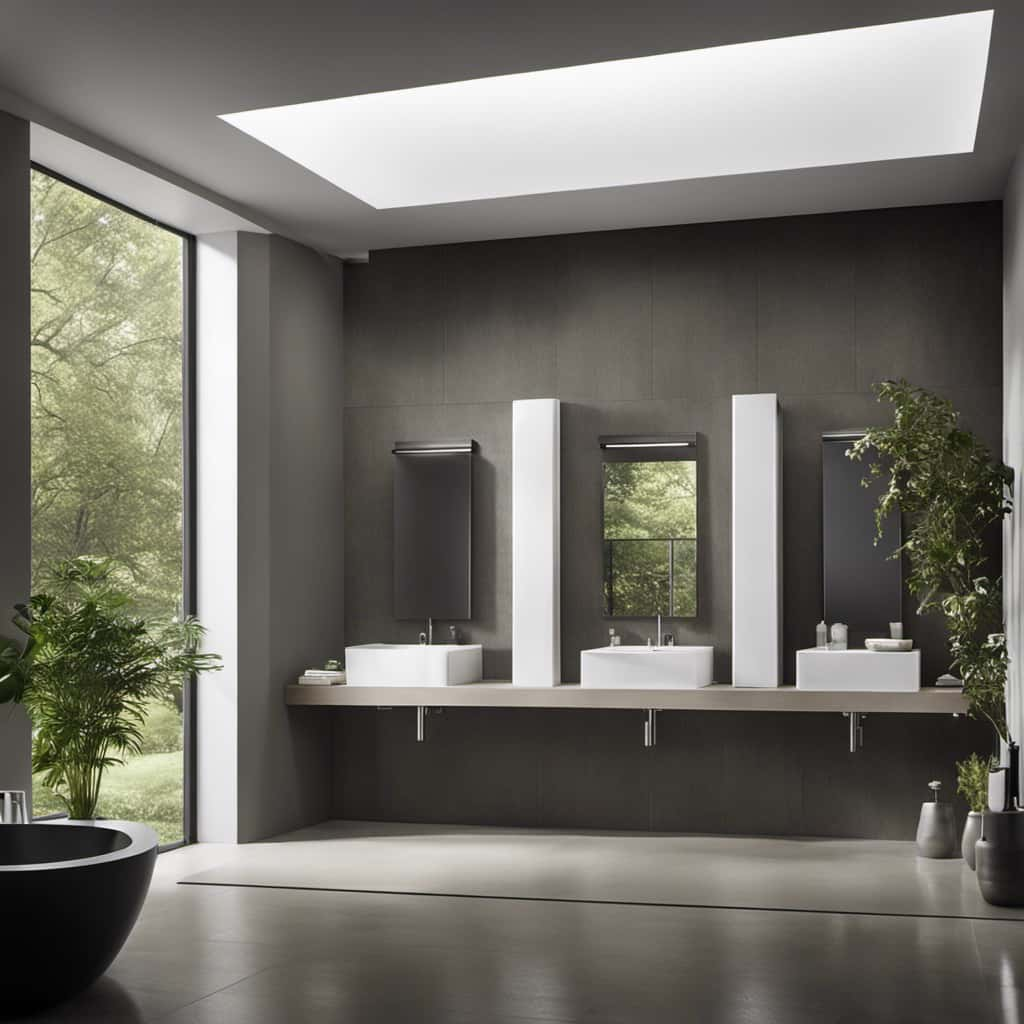Were you aware that on average, individuals spend more than a year of their lives in the bathroom? Given the substantial amount of time spent in this area, having a practical and fashionable bathroom sink is essential.
In this article, we’ll explore various types of bathroom sinks, features to consider, popular styles, and the pros and cons of different materials.
Whether you’re renovating or just looking to upgrade your sink, we’ve got you covered with expert tips for choosing the perfect one.
Key Takeaways
- There are several types of bathroom sinks, including undermount sinks, drop-in sinks, wall-mounted sinks, and pedestal sinks.
- When choosing a bathroom sink, factors to consider include size and style, material, and the installation process.
- Regular cleaning and avoiding harsh chemicals are important for maintaining bathroom sinks, as well as promptly fixing any leaks or drips.
- Different materials used for bathroom sinks include porcelain, stainless steel, glass, copper, and stone.
Types of Bathroom Sinks
When it comes to bathroom sinks, we love exploring the various types available in the market. There are several installation options for bathroom sinks, including undermount, drop-in, wall-mounted, and pedestal sinks.

Undermount sinks are installed beneath the countertop, creating a seamless look and making it easier to clean the countertop.
Drop-in sinks are dropped into a hole cut in the countertop, with the rim resting on top.
Wall-mounted sinks are attached to the wall, saving space and allowing for easy cleaning underneath.
Pedestal sinks are freestanding and rest on a pedestal, providing a classic and elegant look.
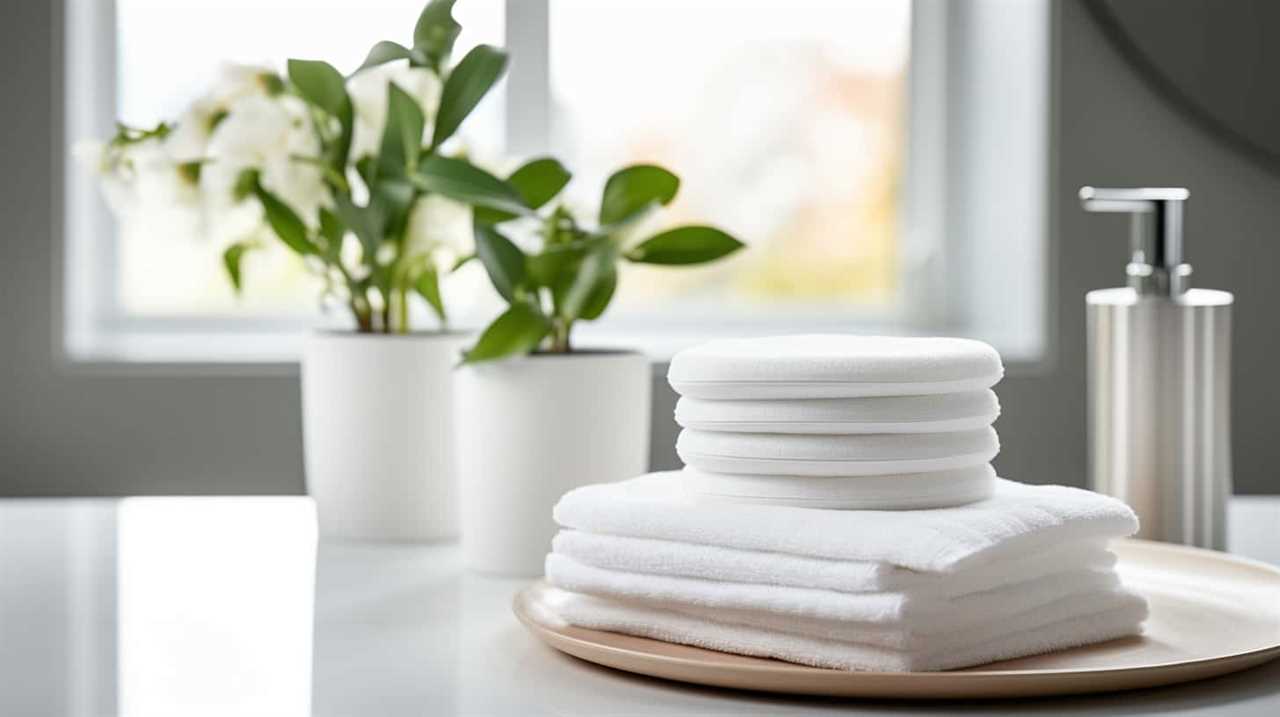
In terms of maintenance requirements, different types of bathroom sinks may have varying needs.
Undermount and drop-in sinks require regular cleaning of the countertop and the sink itself.
Wall-mounted sinks may require occasional cleaning of the wall behind and underneath the sink.
Pedestal sinks may need cleaning of the pedestal base and the space around it.
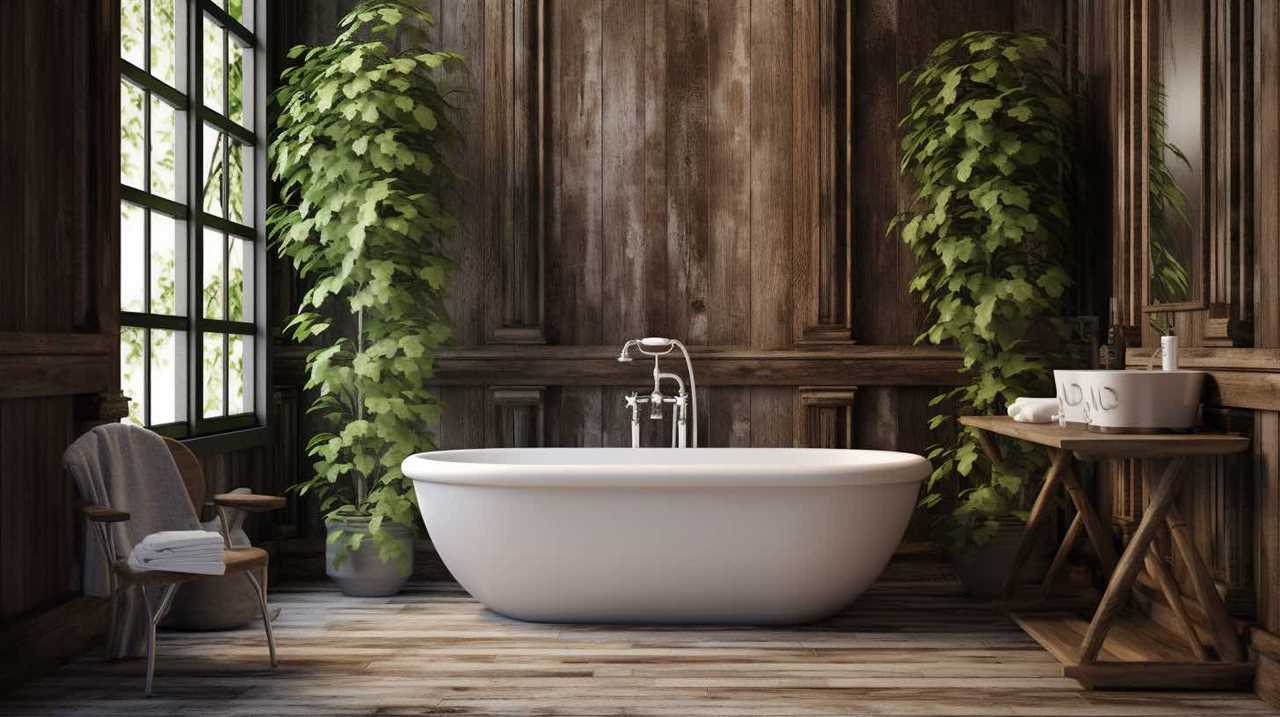
Additionally, proper care should be taken to prevent damage to the sink materials, such as avoiding harsh chemicals or abrasive cleaning tools.
Regular maintenance and cleaning will help keep your bathroom sinks in top condition and prolong their lifespan.
Features to Consider
One important factor to consider when choosing a bathroom sink is the number of available faucet holes. This determines the type of faucet options you can choose from.
Here are some installation considerations to keep in mind:
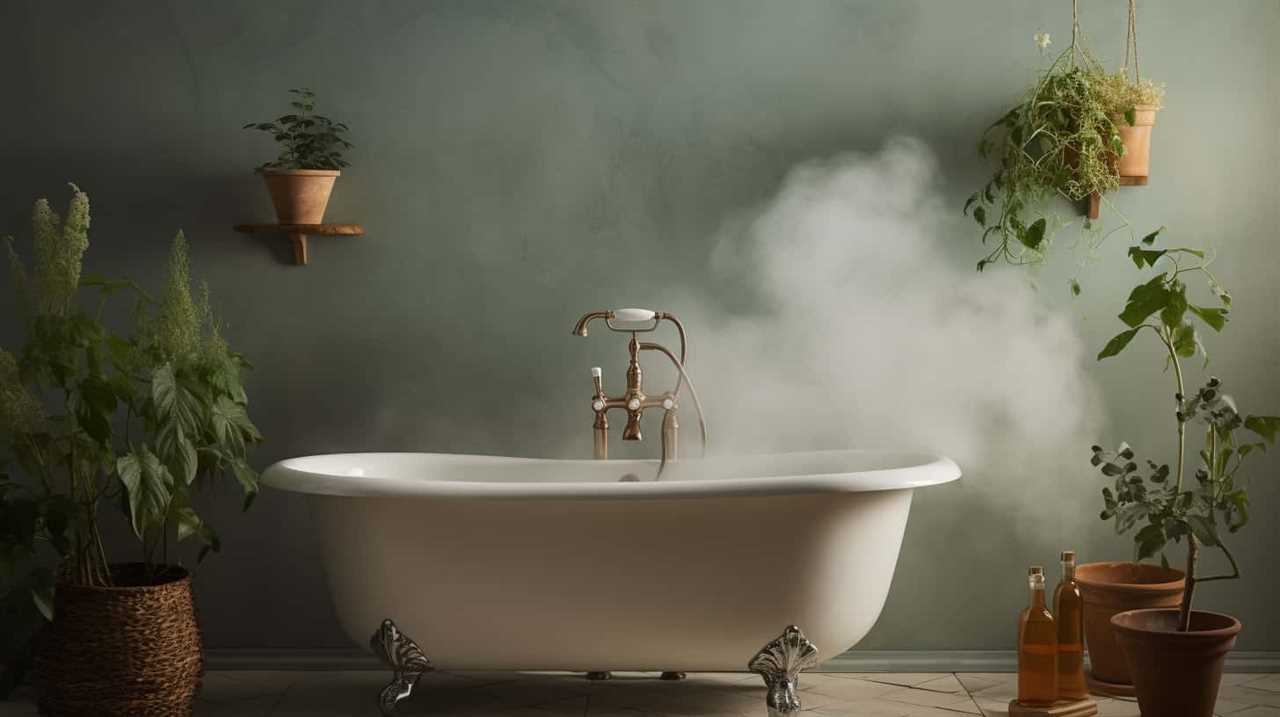
- Wall-mounted sinks: These sinks typically have one or two faucet holes and are a great choice for small bathrooms or modern design styles. However, they require professional installation to ensure proper support and plumbing connections.
- Drop-in sinks: These sinks have a rim that rests on the countertop, with faucet holes cut into the countertop itself. They offer a wide range of faucet options and are relatively easy to install.
- Undermount sinks: These sinks are mounted underneath the countertop, creating a seamless look. They require precise installation to ensure a secure fit and proper drainage.
Considering these faucet options and installation considerations will help you choose the right bathroom sink for your needs.
Now let’s explore some popular sink styles.
Popular Sink Styles
Now let’s explore some of the popular sink styles available for your bathroom.
When it comes to faucet styles, there are several options to choose from. The most common is the single-handle faucet, which allows for easy temperature and flow control.

Another popular choice is the widespread faucet, which features separate hot and cold handles and a spout that’s connected by a bridge.
For a more modern look, you may consider a wall-mounted faucet, which is installed directly into the wall above the sink.
In terms of sink installation, there are various styles to consider. These include undermount sinks, which are installed beneath the countertop for a seamless look, and vessel sinks, which sit on top of the countertop and create a bold statement.
Ultimately, the choice of faucet style and sink installation will depend on your personal preference and the overall aesthetic you want to achieve in your bathroom.
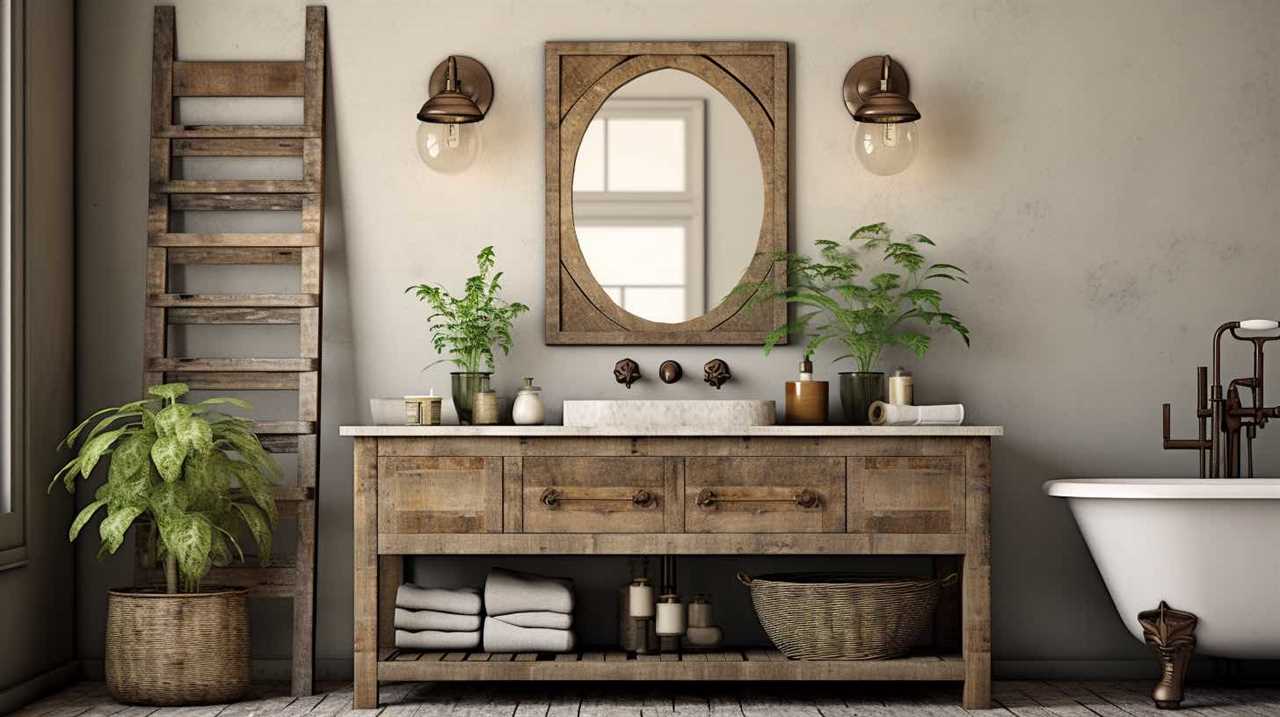
Pros and Cons of Different Materials
To begin discussing the pros and cons of different materials for bathroom sinks, let’s explore the various options available. When it comes to sink materials, there are several choices to consider, each with its own advantages and disadvantages.
- Porcelain:
- Advantages: Porcelain sinks are durable and resistant to stains, making them easy to clean. They also have a smooth and glossy finish, adding a touch of elegance to any bathroom.
- Disadvantages: Porcelain sinks can chip or crack if not handled with care, and they may require regular maintenance to keep their shine.
- Stainless Steel:
- Advantages: Stainless steel sinks are extremely durable and resistant to stains and scratches. They’re also easy to clean and maintain, making them a popular choice for busy bathrooms.
- Disadvantages: Stainless steel sinks can be noisy and may show water spots if not dried properly.
- Glass:
- Advantages: Glass sinks offer a sleek and modern look, and they’re available in a variety of colors and styles. They’re resistant to stains and easy to clean.
- Disadvantages: Glass sinks can be fragile and prone to chipping or cracking. They may also require more frequent cleaning to maintain their clarity.
When comparing the durability and maintenance requirements of various sink materials, it’s important to consider your specific needs and preferences.
Tips for Choosing the Right Sink for Your Bathroom
Let’s dive into some practical tips for picking out the perfect bathroom sink. When it comes to choosing the right sink for your bathroom, there are a few key factors to consider. First, determine the size and style that will best suit your space and personal taste. Next, think about the material of the sink and whether it will be durable and easy to maintain. Additionally, consider the installation process and whether you will need professional assistance or if it is a DIY project. To help you make an informed decision, here are some maintenance tips for your bathroom sink:
| Maintenance Tips | |
|---|---|
| Regularly clean the sink with a non-abrasive cleaner to prevent buildup. | |
| Avoid using harsh chemicals or abrasive materials that can damage the sink. | |
| Fix any leaks or drips promptly to prevent water damage and mold growth. |
Frequently Asked Questions
How Do I Clean and Maintain a Bathroom Sink?
To clean and maintain a bathroom sink, we recommend using specific cleaning techniques and the best products available. It is important to regularly clean the sink to prevent buildup and maintain its functionality and appearance.

Are There Any Eco-Friendly Options for Bathroom Sinks?
There are indeed eco-friendly options for bathroom sinks. By using sustainable materials and incorporating water-saving features, these sinks help reduce our environmental impact while still providing functionality and style.
Can I Install a Bathroom Sink on My Own, or Do I Need to Hire a Professional?
When it comes to DIY installation, it’s essential to consider your skill level, available tools, and the complexity of the task. While some may successfully install a bathroom sink on their own, others may prefer the expertise of a professional.
What Are Some Common Plumbing Issues That Can Arise With Bathroom Sinks?
Leaking faucets and clogged drains are common plumbing issues that can arise with bathroom sinks. These problems can be caused by worn-out washers or O-rings, mineral deposits, or hair and debris buildup.
Are There Any Special Considerations for Choosing a Bathroom Sink for a Small Bathroom?
When choosing a compact sink for a small bathroom, there are several special considerations to keep in mind. Our goal should be to maximize storage space while still ensuring the sink meets our needs.

Conclusion
In conclusion, when choosing a bathroom sink, it’s important to consider the different types available, as well as the features that best suit your needs.
Popular sink styles can add a touch of elegance or modernity to your bathroom.
Additionally, the choice of material for your sink can impact its durability and maintenance requirements.
Interestingly, a study found that 70% of homeowners prefer undermount sinks for their sleek and seamless appearance.
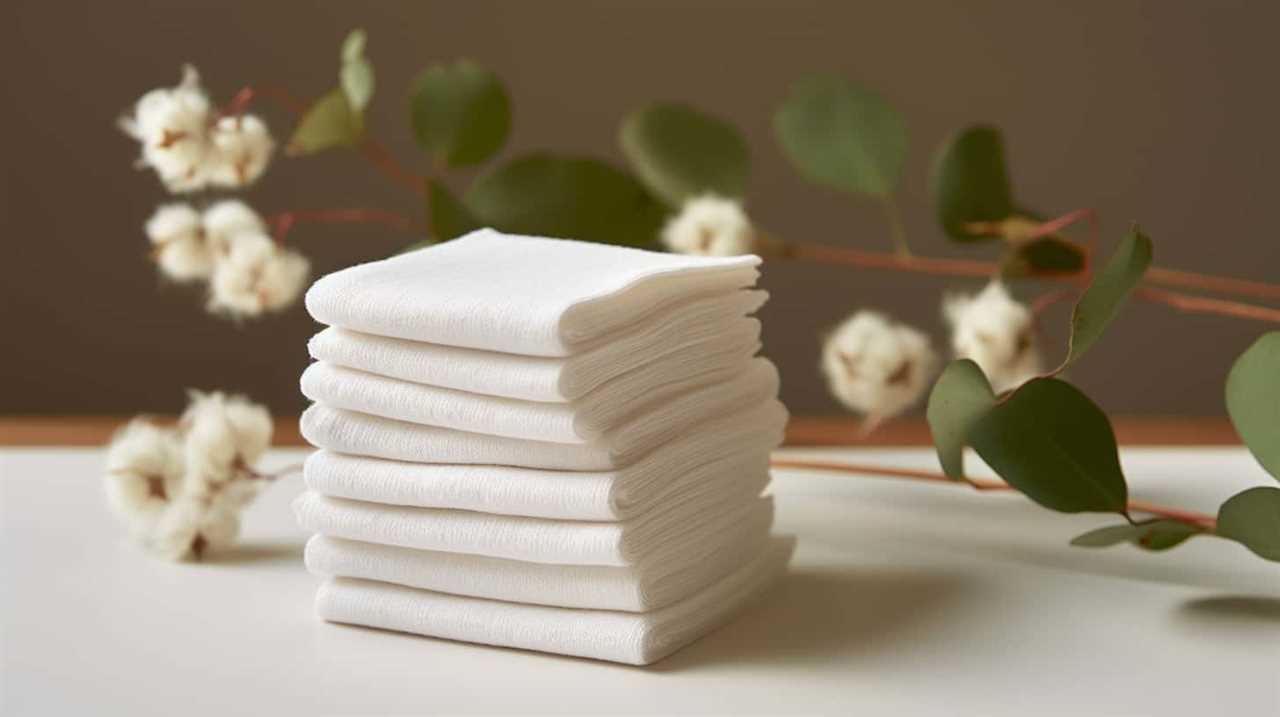
So, make sure to carefully evaluate all the factors before making your final decision.





